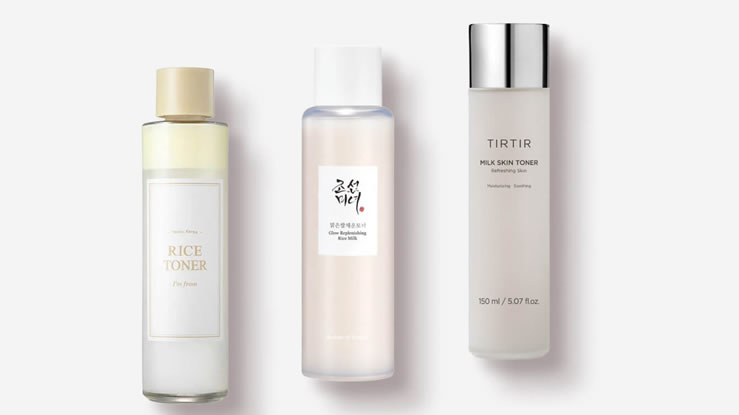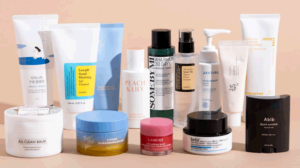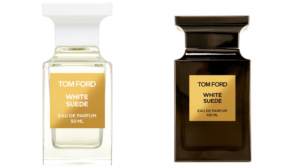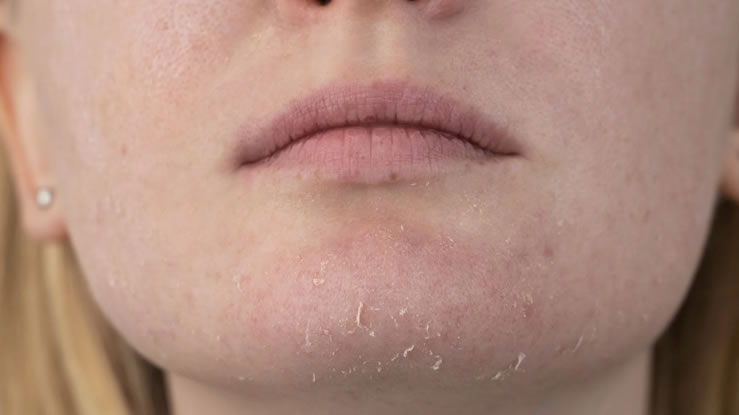Toners help prepare your skin after cleansing. They remove traces of dirt, oil, and makeup and set the stage for your serums and moisturizers. While all toners serve this purpose, not every toner works the same way. Some toners are watery and quick to absorb. Others are creamy and more comforting. These differences have created two main types: regular toners and milky toners.
So, what’s the real difference between a regular toner and a milky toner?
Let’s break it down.
How They Look and Feel
Regular toners look like water. They are clear, thin, and fast-drying. Some leave a barely-there feeling. They usually soak into the skin right away. People with oily skin or acne often prefer this texture because it doesn’t leave any residue.
Milky toners are creamy and soft. They look like diluted milk or a lightweight lotion. They feel richer when applied and often leave a moisturized finish. They don’t absorb as quickly as regular toners. Some people even mistake them for serums.
Key Functions
Regular toner is made to clean and prep the skin. It removes any leftover residue from your cleanser or makeup. It also helps to balance your skin’s pH. Some regular toners exfoliate the skin using acids like glycolic or salicylic. Others may tighten pores, refresh tired skin, or help reduce shine. These are especially helpful if your skin feels oily or clogged.
Milky toner focuses on moisture and comfort. It’s meant to soothe and nourish the skin, not strip it. Many milky toners repair the skin barrier, soften dry patches, and calm redness. These toners are often used by people with sensitive, dry, or irritated skin. They are also helpful during winter or after using strong products like retinol.
Read Also>>>What are milky toners good for?
Ingredient Comparison
Regular toners often include:
-
Alpha hydroxy acids (AHAs) like glycolic or lactic acid to remove dead skin
-
Beta hydroxy acids (BHAs) like salicylic acid to unclog pores
-
Witch hazel to reduce oil and tighten pores
-
Niacinamide to control sebum and improve skin tone
-
Aloe vera or rose water for light hydration
These toners may sometimes contain alcohol, although modern formulas are usually alcohol-free.
Milky toners contain:
-
Hyaluronic acid for intense hydration
-
Ceramides to rebuild the skin barrier
-
Squalane or jojoba oil to lock in moisture
-
Panthenol (vitamin B5) to soothe irritated skin
-
Oat extract or allantoin for calming and comfort
The goal is not to treat acne or shrink pores but to give your skin a healthy, hydrated base.
Skin Types They Suit
Regular toner works best for:
-
Oily or combination skin
-
Acne-prone skin
-
People who wear a lot of makeup
-
Those looking to exfoliate gently
-
Those with dull or uneven texture
Milky toner is best for:
-
Dry or dehydrated skin
-
Sensitive or reactive skin
-
Skin that feels tight or flaky
-
People who use strong treatments like acids or retinoids
-
People living in cold or dry climates
Results Over Time
Using a regular toner may help:
-
Unclog pores and prevent breakouts
-
Control oil and reduce shine
-
Improve skin tone and texture
-
Increase effectiveness of active treatments like serums
Using a milky toner may help:
-
Strengthen the skin barrier
-
Deeply hydrate and soften the skin
-
Reduce redness or inflammation
-
Keep the skin smooth and plump
When and How to Use Them
Both toners are used after cleansing, before any serum or moisturizer. You can apply them with clean hands or cotton pads.
-
Use regular toner in the morning or evening depending on your skin’s needs. If it contains acids, limit it to 2–3 times a week unless your skin builds tolerance.
-
Use milky toner daily, especially at night. It works well before serums and moisturizers. Some people even layer it twice for added comfort.
You can also alternate between both. For example, apply a regular toner two nights a week to exfoliate and a milky toner every other day to stay hydrated.
Can You Layer Them?
Yes, you can. Many people with combination skin or mixed concerns use both types together. First apply the regular toner to clear the skin. Then follow with the milky toner to hydrate and calm. This method works well if your skin changes with the weather or during your menstrual cycle.
Quick Comparison Table
| Feature | Regular Toner | Milky Toner |
|---|---|---|
| Texture | Watery, clear | Creamy, lotion-like |
| Absorption Speed | Very fast | Slower, more comforting |
| Purpose | Clean, exfoliate, refresh | Soothe, hydrate, protect |
| Ideal for | Oily, acne-prone, dull skin | Dry, sensitive, irritated skin |
| Typical Ingredients | Acids, witch hazel, niacinamide | Ceramides, hyaluronic acid, panthenol |
| Frequency of Use | A few times per week (acid-based) | Daily or twice a day |
| Finish | Bare, matte, fresh | Soft, smooth, slightly dewy |
| Post-Treatment Care | Not usually recommended after peels | Excellent for post-treatment recovery |
When to Use Both
Some skincare routines benefit from alternating or layering both toner types. For example, in the evening, you could use a regular toner with mild exfoliating acids to refine skin, then follow with a milky toner to counter dryness or tightness. This combination helps maintain skin clarity while preventing irritation.
Regular and milky toners serve different roles in skincare. One focuses on refining and prepping the skin with actives, while the other centers around comfort and hydration. As skincare trends shift toward skin barrier health and minimalism, milky toners have become more popular, especially among people with sensitive or dry skin.
Understanding the difference allows you to build a routine that works with your skin’s needs and delivers better long-term results.


















